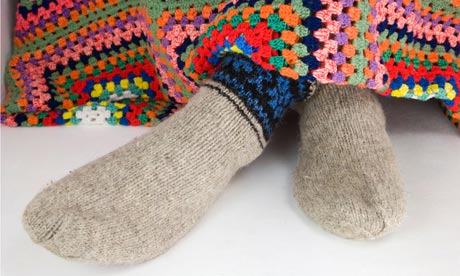
The dilemma
If you've never had a chilblain, you may wonder what the fuss is about – and why some people quake in their sheepskin boots when the weather gets chilly.
Chilblains are painful, burning or itchy red and blue patches that appear on extremities such as the fingers, feet, ears or nose. One in 10 people suffer from them when these parts of the body are suddenly warmed up after being exposed to the cold (winter is peak season for chilblains). An article in the British Medical Journal last year suggested that women are more affected than men. They can cause swelling, may form ulcers and sometimes get infected. However, a well-behaved one should go on its own within three weeks.
Chilblains are caused by poor circulation in response to the cold. The tiny blood vessels under the skin narrow in low temperatures. When the skin warms up again they become leaky and fluid gets into the surrounding tissue, causing inflammation. To prevent them you should warm your skin gently after being out in the cold: don't wrap yourself around the radiator when you get home. When outside keep your limbs and face warm with thermals, layers of loose clothing and a hat. Don't rest your feet on a hot water bottle in bed but wear socks instead.
If these preventative measures don't work and your chilblains are painful, purple and itchy beyond belief, should you go to your doctor or treat them yourself?
The solution
Most people never see the doctor for chilblains, as they tend to go on their own if you don't scratch or apply direct heat to them. If your chilblain seems infected (warm, red and sore), then you should get it looked at. Chilblains can be due to conditions such as Raynaud's syndrome, which causes the circulation to the fingers and toes to be interrupted, often by the cold. The fingers and toes can look deathly white then blue and red. During these colour changes they may be very painful.
If you think that you have this condition you should see your doctor. If you have diabetes and get chilblains you should also see your doctor as they are more likely to get infected. If you have them repeatedly out of chilblain season you should be checked for underlying connective tissue disorders.
However, there isn't much evidence that anything heals chilblains any faster than nature. Over-the-counter remedies containing menthol, camphor or capsicum that produce local skin warming by dilating small blood vessels do not help. Neither does vitamin D or steroid cream. If you have severe chilblains a doctor may suggest that you try a medicine such as nifedipine, which dilates blood vessels. But again the evidence that such drugs work is poor.

